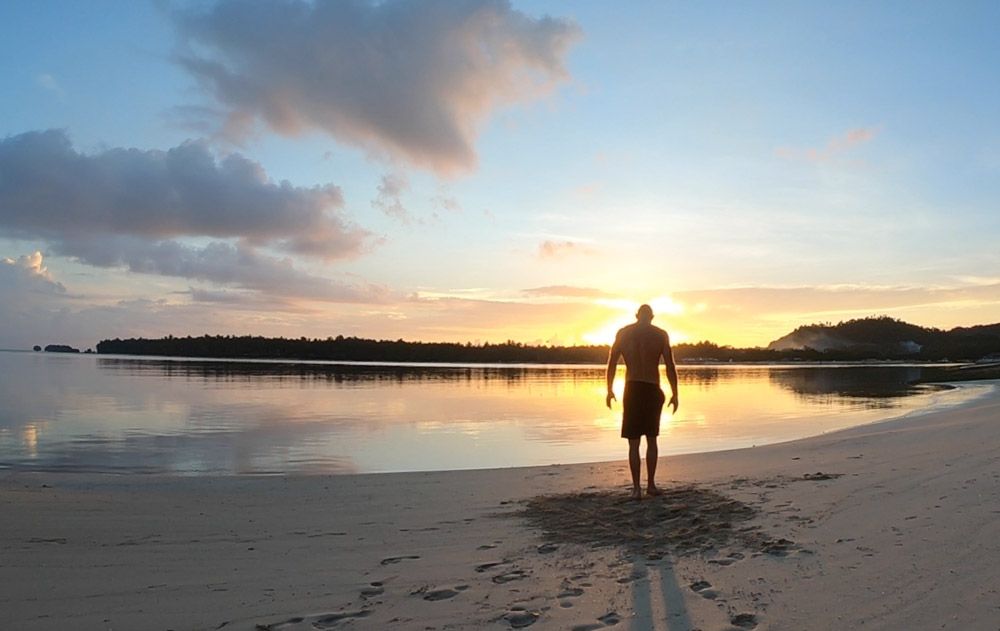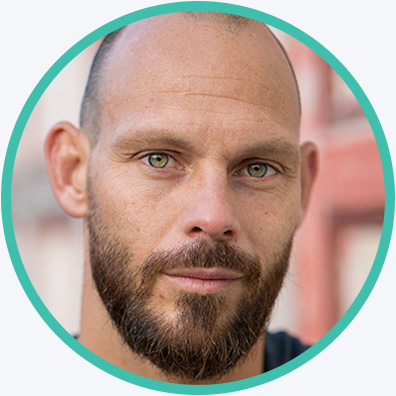
Meditation: The most powerful pose you’ll do
Yoga in the West has become one of the most popular pastimes around. The word alone is, in fact, one of the top 15 words used in Britain [a].
For something seemingly so ubiquitous, it’s interesting how few people know that its original purpose had little to do with handstands, six packs or spandex. As the spiritual head of the Himalayan Institute Pandit Rajani Tigunait explains, “In ancient times, meditation was the goal and asanas (poses) were a means of enhancing the capacity of the body and mind so that a person could sit in meditation for long periods with as few distractions as possible.” [b]. The physical postures were simply vehicles to transcendence. Somewhere along the line, the emphasis shifted to the physical practice instead of the spiritual or mental. Quite possibly because of the Instagram period we live in, the importance of the visual trumps all others.
I was and, to a degree, still am guilty of putting too much emphasis on physical practice and not enough on meditation. Mind you, it’s pretty hard to talk on social media about spiritual things without coming across as “holier than thou” or, as some might say, “a dick”.
The reality is, the founding fathers and mothers knew what we are fast learning: that meditation is a powerful tool in our mental well being. I’m not a consistent practitioner, but every time I do it, I cannot understand why I’m not doing it daily.
Meditation has currently come back into my life due to an injury and an inability to do much physically. In a way, that’s been a godsend. It’s reminded me of just how helpful meditation can be. Our lives are a cacophony of distracting noise: phones, televisions, music, conversations, the news, all screaming and competing for our attention. They drown out another sound, one that is far more subtle and far more important: that inner voice that resides in each of us. Some call it the Divine while others call it intuition. The label is unimportant, but its message is not. In this quiet time of meditation, by myself, left alone to my thoughts, my brain can use its energy to address the worthwhile questions that concern my psyche. Am I happy? What makes me happy? What do I want? What’s important to me? Why did I get so angry today?

These are the kind of questions we should perhaps be spending more time thinking about. I don’t put too much emphasis on any thought coming in. I simply acknowledge it and let it dissipate. Our minds are smarter than we give them credit for. We simply need to give our minds the quiet and the space to do their thing. In this space we get to know ourselves better, and became more accepting of ourselves.
I personally believe how we treat others is a reflection of how we treat ourselves. By that logic, a personal meditation practice will not only affect us, but all those we interact with. And in a world moving far more toward a right wing and individual perspective of closed borders, of fear of The Other, meditation could well be the key to a more accepting world.
But, don’t take my word for it. The science speaks for itself. Science director at Stanford, Emma Seppala PHD dedicated her PhD research to the subject. She found that even a small amount of meditation each day can increase immune functions, make you more compassionate, help you focus your attention and even become more productive. She found a total of twenty scientifically-backed ways that meditation is beneficial to your wellbeing which she outlines in her book “The Happiness Track “(c). There have been thousands more studies and with the level of suicide and self harm increasing in the U.K [d], it was particularly interesting to see a study that found meditation as effective as some anti-depressants.
Dr Madhav Goyal conducted the experiment and found that after eight weeks of mindful meditation, patients’ anxiety and depression levels improved at a rate equal to that of studies using anti-depressants. (This same study found it can help manage and alleviate pain, which is great news for any struggling with an injury like me. [e])

Where to start with meditation?
If you’re coming around to the idea of putting meditation into your daily practice, you may be wondering, “How do I start?” And that’s really the best part. Your new path to feeling better requires very little to get going. No unique equipment, no fancy gadgets. All you need is a little time and somewhere to sit or lie comfortably, in whatever position suits you. I prefer to sit as I tend to fall asleep if I lie down.
Try the following steps below to get started:
1. Close your eyes
This helps avoid visual stimulus and draw your intention inwards.
2. Choose a focus point
To start with simply concentrating on inhaling and exhaling at a nice slow pace. If you want help try something else or help with concentrating you can repeat a phrase or a word or count Mala Beads.
3. Don’t try too hard
4.Your mind will wander and when it does, just acknowledge it and refocus your attention. This is part of the training: to help you recognise when your thoughts are wandering and to be able to gently bring them back.
5. Keep it short
Sitting on your own and being quiet can be quite intimidating for many of us, so start with a few minutes a day. Set a timer and gradually try increase the time each week. You may find that the more you do, the more you want to do. Find an amount of time that works for your life. A lot of the current research puts emphasis on frequency rather than duration, which brings me to my next point.
6. Keep consistent
As with any sort of physical training, we tend to get better with time. So allow yourself time to get into it and do it long enough to see a difference. For some, it might be immediate, while others might need some time.
7. Be Kind to yourself
Meditation is about wellbeing, so don’t beat yourself up about not getting it right, having a bad session or even missing a session.
Other methods of meditation
The above is just one type of meditation, known as mindful meditation. You should feel free to try out different methods such as Kundalini, Chanting, Group mediation and Guided Visualisation to find which is best for you. There are also a plethora of on-line classes and apps now available to you, like “Headspace”, “Buddify” and “Mindfulness” which are available on Android and IOS to help you with your journey.
There has never been a better time to start on your path to personal growth. As Rumi pointed out, “Yesterday I was clever so I tried to change the world. Today I am wise so I’m changing myself.”
References
- a: Unknown. 2017. This is unbelievable! ‘Yoga’ is one of the most popular words in Britain. [ONLINE] Available at: https://economictimes.indiatimes.com/magazines/panache/this-is-unbelievable-yoga-is-on-of-the-most-popular-words-in-britain/articleshow/58166153.cms. [Accessed 24 October 2017].
- b: Pandit Rajani Tigunait. 2015. What is the purpose of asana. [ONLINE] Available at: https://yogainternational.com/article/view/what-is-the-purpose-of-asana. [Accessed 24 October 2017].
- c: Emma Seppala PHD. 2013. 20 Scientific Reasons to Start Meditating Today. [ONLINE] Available at: https://www.psychologytoday.com/blog/feeling-it/201309/20-scientific-reasons-start-meditating-today. [Accessed 24 October 2017].
- d: Unkown. 2017. How common are mental health problems. [ONLINE] Available at: https://www.mind.org.uk/information-support/types-of-mental-health-problems/statistics-and-facts-about-mental-health/how-common-are-mental-health-problems/#twoto%20see%20a%20study%20b. [Accessed 24 October 2017].
- e: Madhav Goyal, M.D. 2014. Meditation for Anxiety and Depression?. [ONLINE] Available at: http://www.hopkinsmedicine.org/news/media/releases/meditation_for_anxiety_and_depression. [Accessed 24 October 2017].




